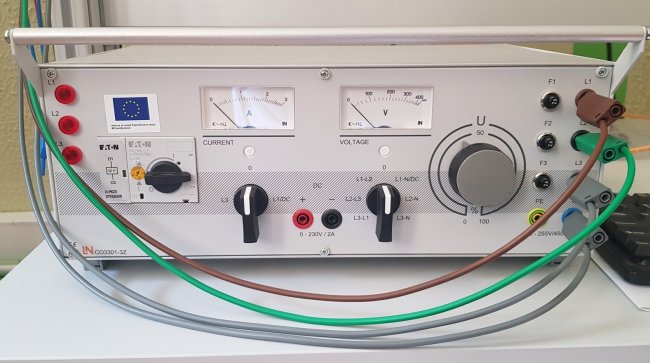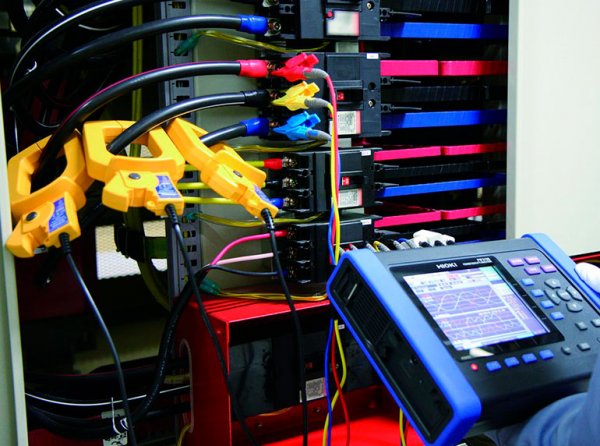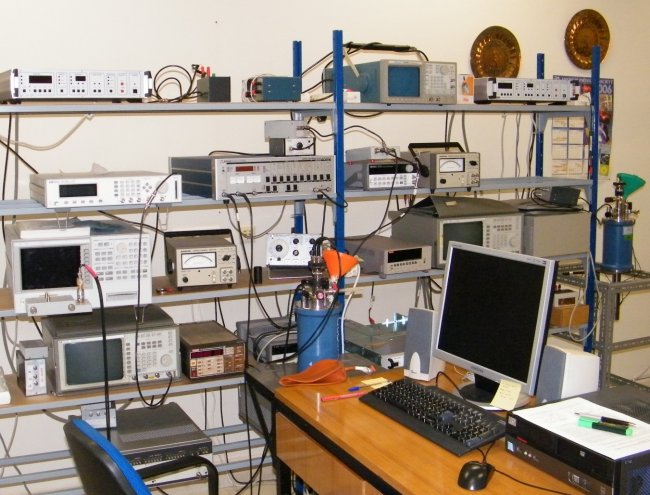Electrical measurements and electrical measurement technologies, the role and importance of measurements
What is a dimension
Measurement is one of the most ancient operations used by man in social practice, and with the development of society it increasingly permeates various fields of activity.
Measurement is a cognitive process: after measuring a certain quantity, we always know something more about this quantity than before the measurement: we discover its size, which is often the source of a number of additional information for us, we learn an idea about this quantity, its relationship with other quantities etc.
The measurement process is a physical experiment: measurement cannot be done speculatively, only through theoretical calculations, etc.
The measurement of a physical quantity is a comparison with a certain value of the same physical quantity taken as a unit: one can measure, for example, length only by comparing it with a certain length.
From the above definition it follows that to perform any measurement you generally need:
-
measure — a real reproduction of a unit of measure, for example, when weighing, a weight is required;
-
measuring device — technical means for carrying out the process of comparing a measured value with a measure.
Having a measure is absolutely necessary to make the measurement. It is true that in some cases the measure seems to be missing in the measurement: for example, when weighing a dial, the weights may not be used directly, but this does not mean that the measure is not involved in such a measurement: the scale of these weights is pre-calibrated using of appropriate weights.
Therefore, in the scale of such weights, a measure of mass is, as it were, placed, which thus participates in all weighing.
In the same way, when you measure electrical resistance with an ohmmeter nd, the use of resistance measures is required, but in this case they can be abandoned only because during the manufacture of the ohmmeter, its scale is calibrated using sample resistance measures, which are indirectly included in each use of the device.
On the other hand, a measuring device is not always necessary to make a measurement: for the simplest measurements it is enough to have only a measure, but the device may not stick.
See also: Physical quantities and parameters, units
Direct, indirect and aggregate measurements
According to the method of obtaining the measurement result, it is necessary to distinguish:
-
direct measurements;
-
indirect measurements;
-
cumulative measurements.
Direct measurements are those measurements in which the quantity of interest itself is measured directly: weighing on a scale to determine the mass of a body, measuring length by directly comparing a given distance with a corresponding measure of length, measuring electrical resistance using an ohmmeter, electric current with ammeter etc.
Direct measurements are a very common type of technical measurement. Indirect measurements are those measurements in which the amount of interest itself is not directly measured, but some other quantities with which the measured amount is in a certain relationship; After determining the values of these quantities (by direct measurements) and using the known relationship between these quantities and the measured quantity, it is possible to calculate the value of the measured quantity.
For example, to determine the specific electrical resistance of a certain material, the length of a wire made of that material, its cross-sectional area, and its electrical resistance are measured. From the results of these measurements, the desired resistance can be calculated.
Indirect measurements are more complicated than direct measurements, but they are used in technology and scientific research quite often, especially since in many cases direct measurements of some quantities turn out to be practically impossible.
Cumulative measurements are those measurements in which the desired measurement result is derived from the results of several groups of direct or indirect measurements of individual quantities, the functional relationship with which the quantities we are interested in are expressed in the form of implicit functions.
Based on the results of groups of direct or indirect measurements of a number of quantities, a system of equations is compiled, the solution of which gives the values of the quantities of interest.
The role of measurements and the importance of metrology in modern society
The development of science and technology is inextricably linked to the development and improvement of measuring instruments. The statement of each new scientific or technical problem forces us to look for new measuring instruments, and the improvement of measuring instruments contributes to the development of new branches of science and technology.
The accumulation of scientific and applied knowledge in the field of electricity and magnetism significantly enriched the theory and technique of measurements and led to the formation of an independent and extensive branch — electrical measurement technology.
Electrical measurement technology covers the methods of electrical measurements, the design and production of the necessary technical means (measuring devices), as well as questions about their practical use.
Currently, the objects of electrical measurements are primarily all electrical and magnetic quantities (current, voltage, power, electrical energy, amount of electricity, current frequency, magnetic properties of materials, etc.).
However, due to the high accuracy, sensitivity and great experimental convenience of electrical measurement methods, measurement techniques are becoming more and more widespread, which are reduced to a preliminary conversion of the quantities to be measured into an electrical quantity proportional to them. which is then measured directly.
Such measurement methods, the so-called «non-electrical measurements of non-electrical quantities» (temperature, pressure, humidity, speed, acceleration, vibrations, elastic deformations, etc. At a distance, performing mathematical operations to hell with measurable quantities and greater convenience to you record them on time.
Electrical measuring equipment plays the role of an important factor for scientific and technical progress in the operation of energy systems, and the measurement of electrical parameters of power plants is an incentive for rationalizing energy saving.
Electrical measurement technologies are also extremely important in the control of production processes in various industries, in the control of the quality of materials, semi-finished products and many products, in geological surveys and in a wide variety of scientific research, where electrical and magnetic measurement methods are used to obtain of the most accurate results in a very wide range of measured values.
A selection of articles on various electrical measuring devices and their practical use:
Classification of electrical measuring instruments, scale symbols of devices
Standards for electrical units and exemplary measures





